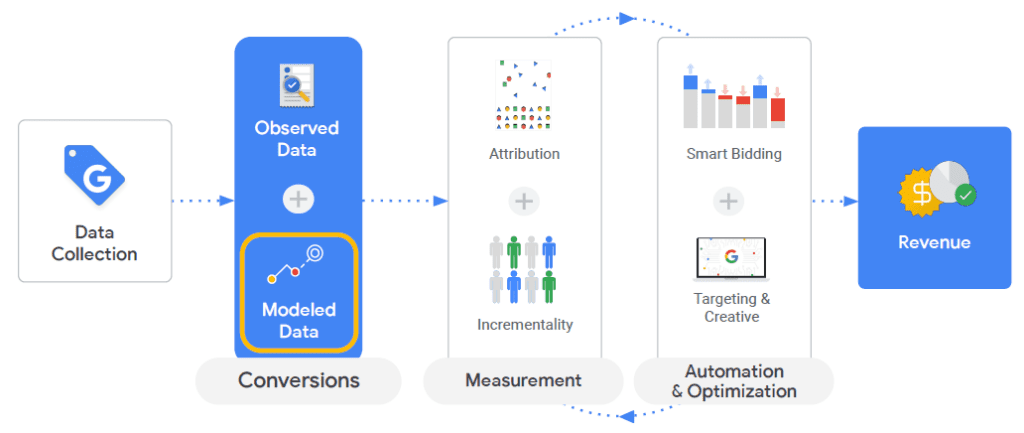 With all of the ongoing changes around user privacy in the digital world, you may be wondering what online brands and retailers like you can do to improve the efficacy of your advertising efforts on Google.
With all of the ongoing changes around user privacy in the digital world, you may be wondering what online brands and retailers like you can do to improve the efficacy of your advertising efforts on Google.
Around the end of 2020, Google introduced a new alpha feature to Ads partners called Enhanced Conversions, which is designed to increase accuracy for conversion tracking in Google Ads. Just recently, in October 2021, Enhanced Conversions was publicly announced and rolled out to all Google Ads advertisers to improve the reliability of Google Ads conversion tracking as the industry adapts to increased consumer demands for data privacy. Over the last several years, many changes have been introduced that have forced data collection and advertising platforms to adapt and prepare for further restrictions, such as:
- Regulatory changes that restrict how data can be collected and used and set the stage for US privacy laws down the road, like the General Data Protection Regulation (GDPR), California Consumer Privacy Act (CCPA), and California Privacy Rights Act (CPRA)
- Browser and operating system updates like the iOS 14.5 App Tracking Transparency (ATT) update and forthcoming browser cookie restrictions. Safari, Firefox, and other browsers no longer support third-party cookies, and first-party cookies are shortened to a lifespan of seven days on Safari. Other browsers may follow suit in the future.
- An increase in the popularity of extensions and browsers such as Brave that block ads, trackers, and/or cookies.
Impacts from user privacy regulations and platform changes are forcing the industry to start relying on aggregated and anonymized measurement and data collection. In fact, 85% of digital media professionals say cookie loss and accurate measurement are two of their top three challenges.
Conversion modeling will stick around to help provide a full picture of ad performance.
Conversion modeling: The use of machine learning to quantify the impact of marketing efforts when a subset of conversions can’t be tied to ad interactions.
Modeling is already used widely in the industry today. According to 3P Qualitative Research Study on Conversion Modeling, 2x as many marketers prefer to use a combination of modeled plus observed data compared to observed data only.
 So, how does Enhanced Conversions help improve the data quality of Google Ads?
So, how does Enhanced Conversions help improve the data quality of Google Ads?
Enhanced Conversions: A Google Ads feature that works by collecting and sending hashed first-party conversion data from your website to Google in a privacy-safe way, using a one-way hashing algorithm called SHA-256.
In other words, it collects customer data such as email addresses, encrypts that data through hashing, and then sends the hashed user information to Google so that Google can match it against signed-in Google accounts.
If Google was not able to attribute your conversion to an ad click through the website tag alone (due to the restrictions listed above, or any other reason), it may be able to piece together the missing information by locating your Google account and seeing that you did click an ad for that business. From there, your conversion can be tracked and tied to a particular ad campaign, when it otherwise would not have been reported in Google Ads at all.
 Enhanced Conversions Requirements and Prerequisites
Enhanced Conversions Requirements and Prerequisites
There are several eligibility requirements for setting up Enhanced Conversions on existing Google Ads conversions:
Conversions must be tracked through the “Website” conversion source to be eligible for Enhanced Conversions. Other conversion sources, like Google Analytics imports, phone calls, or offline conversions, are not eligible.
- Enhanced Conversions will only work for conversion types with identifiable customer data that is accessible. One or more of the following pieces of customer data must be available on the page where the conversion takes place:
- Email address (preferred)
- Name and home address
- Phone number
- Conversion tags must be up-to-date and running through one of the following*:
- Google Tag Manager, using the Google Ads tag template
- The Global Site Tag (gtag.js)
- Google Ads tracking code must be up-to-date and present on every page of the website*. This could be achieved through:
- A Conversion Linker tag in Google Tag Manager, firing on the “All Pages” trigger
- A Global Site Tag on every page, configured for Google Ads tracking
- An up-to-date remarketing tag, present on every page
There are multiple implementation methods and ROI’s Analytics Support team is here to help.
Once Enhanced Conversions is set up, it needs up to 75 days of “training” before you begin to see an impact on your reports.
In the meantime, you will see “Recording (processing enhanced conversions)” in the Status column of your conversion.
When the learning period is complete, the Status will temporarily change to “Recording (enhanced conversions),” which means Enhanced Conversions are now being used in reporting for your conversion. You will also receive an alert notifying you that enhanced conversion data is ready to integrate into your conversion data.*
For the first 30 days that Enhanced Conversions are included in reporting, you will be able to hover over the Tracking Status to see an impact card showing you the percentage of reported conversions by campaign that were tracked through Enhanced Conversions.
After 30 days have passed, this impact card will go away, and you will no longer be able to see the percentage breakdown of conversions tracked through Enhanced Conversions. The Status will go back to simply saying Recording conversions, but will mention enhanced conversions when you hover over it.
As the industry continues to change, it is essential that online retailers invest in a durable foundation for all conversion modeling.
The actions to take right now in order to adapt to the privacy landscape and to receive the most accurate reporting and optimization are to set up conversion tags in Google Tag Manager or Global Site Tag, enable Enhanced Conversions and adopt Google Analytics 4. These tools will be necessary in a future that is unknown and changing every day.
*We recommend staying on the lookout for this alert so that you can take advantage of the 30-day window to find out how big of a lift to conversion tracking you can expect to see from implementing Enhanced Conversions.


 Enhanced Conversions Requirements and Prerequisites
Enhanced Conversions Requirements and Prerequisites

